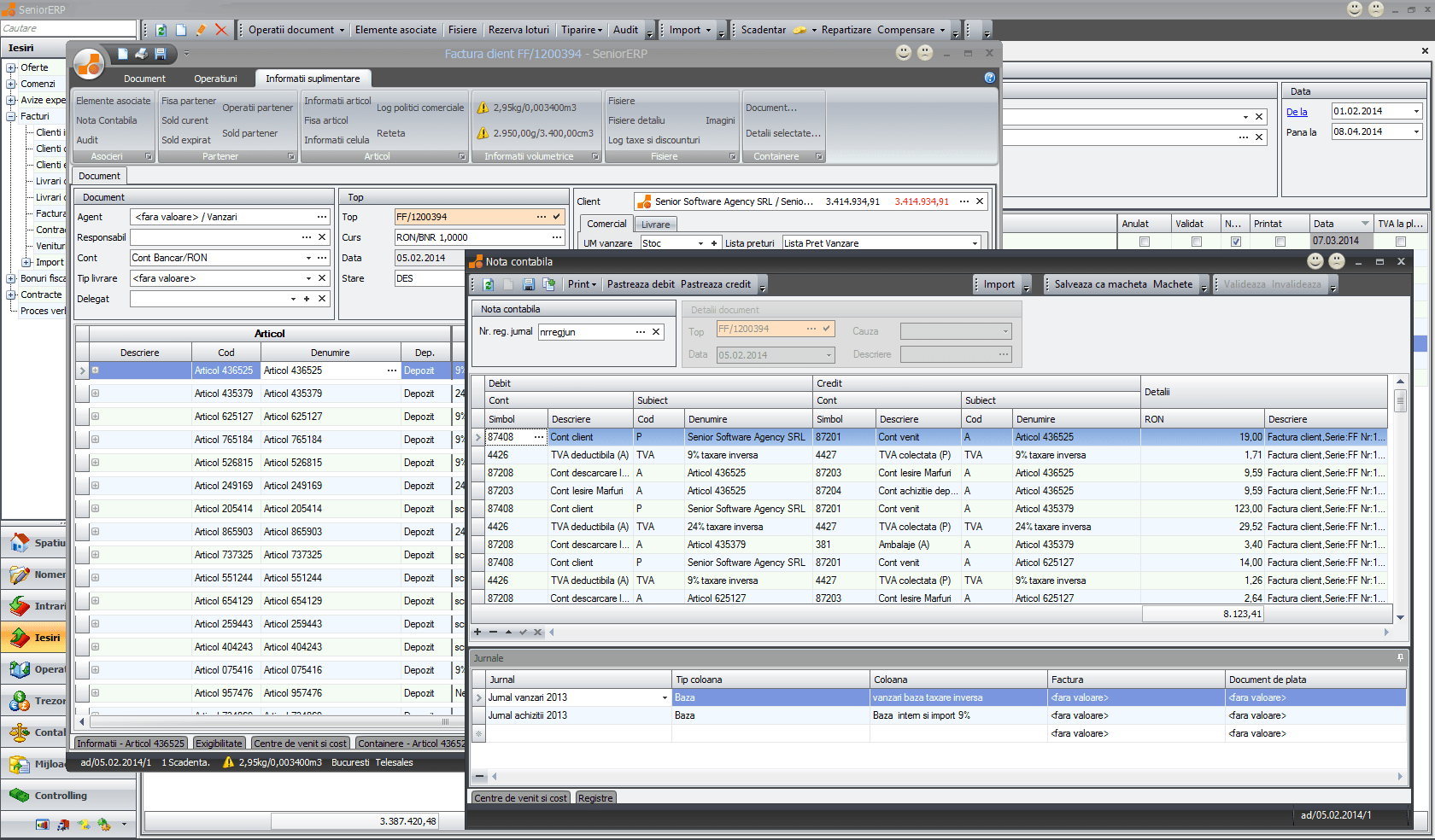Would you like to download this whitepaper?
Implementing Accounting Software
July 15,2019 / Haroon Juma / Accounting / VAT / Software Solutions

Are You a Business Implementing An Accounting System?
What Should You Consider?
As a tax registered person, businesses and individuals are obliged to accurately record all taxable supplies and purchases subject to the Legislation which also sets out requirements to retain all your transactional information and documentation supporting your returns for 5 years.
Naturally, this can be a complex task using manual processes and comply to the full regulations. The automation of sales and purchase transactions in an accounting platform is a more accurate and reliable method to manage your obligations. As a result, this can:
- Reduce the cost of compliance
- Speed the process of filing returns
- Retain the necessary information if requested by the FTA. A strong byproduct from accounting software is an improved financial reporting model to provide greater insight to your business’ performance and health. Understanding your business’ profitability, receivables, payables and cashflow considerations are a major benefit to manage cash demands and manage liquidity. Most business’ focus on sales and expenses, however the cash demands and provisions can be more complex if you have many suppliers and vendors with a VAT payment to budget for.
Key Questions To Assist Your Approach
When your business seeks to adopt an accounting software platform, you should seek to plan and adopt some structure to your implementation. Our experience suggests many businesses face significant challenges in implementation that can be better avoided. Consideration of these key points will significantly reduce your cost and time of implementation
Cloud or On-Premise Platform?
This entirely depends on your requirements.
If your business doesn’t have any special needs for customisations such as user rights, specific workflow processes, integrations or non-standardised reporting; cloud is a more cost-effective solution to speed up your implementation and provide on demand reporting from any device.
The total cost of ownership is undeniably lower for cloud and you can avoid the need for capital costs and special skills or support for your accounting software. Your business would need to adapt to the software, however many cloud systems have configured workflows that can help your business if you lack any best practice models.
As a counter, on-premise systems can be more flexible and support customisations delivered by professional accounting software development providers. However, you will need to be specific with your requirements to ensure projects are delivered to time and budgets. In addition, your business will need to budget for support and periodic upgrades for new functionality.
Does FTA Certified software matter?
Certified software will allow your business to extract a predefined file (FTA Audit File) detailing from your taxable transactions underpinning your VAT submission. This file provides more assurance to the FTA on the reliability of your VAT filing (required under FTA Audit) and hence is a preferred option.
Have you defined your financial reporting requirements?
This may seem an obvious question however it is a common oversight which can complicate your implementation if addressed at a later stage. Most software will support granular reporting for a number of areas such as products, expenses, projects etc.
Your business and financial reporting requirements play a key role in the approach for your accounting set up particularly your chart of account model and reports. Neglecting to define this can lead to reworking the policy for your data postings and correct how your transactions were recorded which can be a laboriously manual effort.
Key Questions To Assist Your Approach
Are the right stakeholders engaged throughout the project?
Financial reporting and accounting should not be confined to the Finance function. Your financial information can play an important role in answering many tactical and strategic questions such as what is selling, what is largest expenses, what is delivering the growth, how much cash is available or required for next period. Therefore, your all your business stakeholders from management to operations should be engaged in the design of your reporting requirements.
Where should I start?
Once your strategy and requirements are clearer, setting up your company master data is your first goal. Most software support import tools, so the entry can be automated.
A key goal should be to ensure your data is accurate and cleansed to create unique records for your customers, vendors and products. Failing this objective will lead to reporting errors such as inaccurate reporting of payables and receivables reports to a specific vendor or customer.
Setting up your accounting is the biggest challenge. most companies seeking to implement without the necessary experience or skills quickly run into issues. Organising and collating a clear understanding of your opening balances, transactional information, entering your transactions, reconciling to your cash or bank require some understanding to ensure your accounts are set up accurately.
Once set up correctly, the process of business as usual entries of sales, expenses and capital account changes are more manageable. Your business should also consider who is controlling your master data. Uncontrolled access to untrained personnel can lead to corrupted data which will affect the reliability of reports
How much is enough data?
From the perspective of the Executive Regulations, you must maintain a set of accounts from January 1st 2018. Unless your business has a regulatory or strong business requirement, entering a larger period your historical transactions lead to greater requirements for manual review and reconciliation.
A key question should be whether your chosen platform will support the import of transactional data, automating this process can reduce costs and time of entry. However, you should expect differences that will need keen attention to the details to ensure an expected outcome.
How Do You Assure Success?
Many projects evolve and do not follow a straight line to your targeted goals. Adaptability, speed of decision making and engagement from your business is a key requirement. Many questions and clarifications will be required to understand the historical information being entered accurately and your stakeholders should be prepared for timely responses.
A major contributor to your project will setting up your company’s project decision making process when issues occur. You should also assess internal capabilities to execute the project and minimizing the degree of changes implemented in your chosen platform. Continually ask whether the issue or requirement can be addressed from a process or people adaptation to deliver a sustainable solution
Research has shown project failures are characterized by a lack of focus on training and change management.
As your new process and platform goes live, a defining feature of your success will be ensuring the roll out (whether a small business or large) is still supported by the project team for some time.
Communication, training, review and support will be required to ensure what you have implemented becomes an accepted and normal working practice.
Key Questions To Assist Your Approach
What if you are experiencing difficulties?
Implementing fast and focusing on roll out will increase the probability of success.
Experience and knowledge play a key role in this equation. If your business lacks these capabilities, it is advisable to secure external support as the investment may prove to be more cost effective than correcting errors in production.
This approach can decrease the overall project budget requirements and avoid the difficult choice to start again and write off project investments.
Summary
From our experience, these discussion points can improve the success of your project.
Implementing business critical software can be a disruptive exercise that can be better managed with:
- – Engagement with the right stakeholder
- – Appropriate attention to your requirements,
- – Setting reliable and timely decision-making processes,
- – Filling capability gaps and resourcing appropriately
- – Attending to a post launch support project to ensure operating a new business process becomes the accepted mode of operation
- – On-going training and development As your business assesses its plan or current execution, these recommendations do not necessarily lead to greater demands on your resources. They may in reality reduce the impact to your business over the medium term.
Partner With SimplySolved
Serving over 200+ clients we know the challenges your business faces operating cost effective, compliant and efficient back office operations in Finance, Tax, Human Resources Management, IT and Marketing.
As an FTA Accredited Tax Agency with ISO 9001 Quality & 27001 Information Management Certification, we offer a quality-based approach to our services supported by dedicated team of certified professionals.
We support our clients with defined processes, platforms and expertise to deliver advisory, project and outsourced services in Accounting, Tax, Auditing, HRM, IT & Marketing. Our offerings are specially designed to meet the UAE Regulations to put you in control of your information, comply to the regulations and help you make better business decisions.
